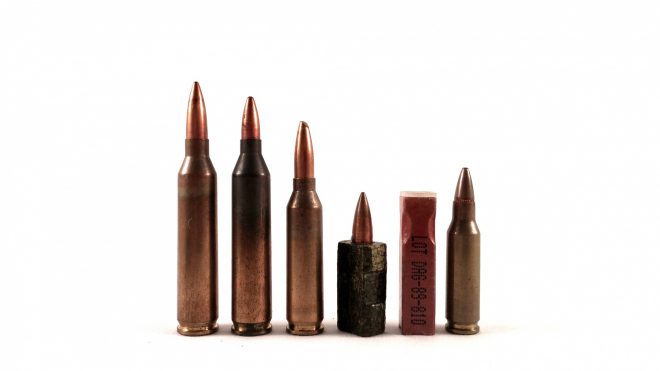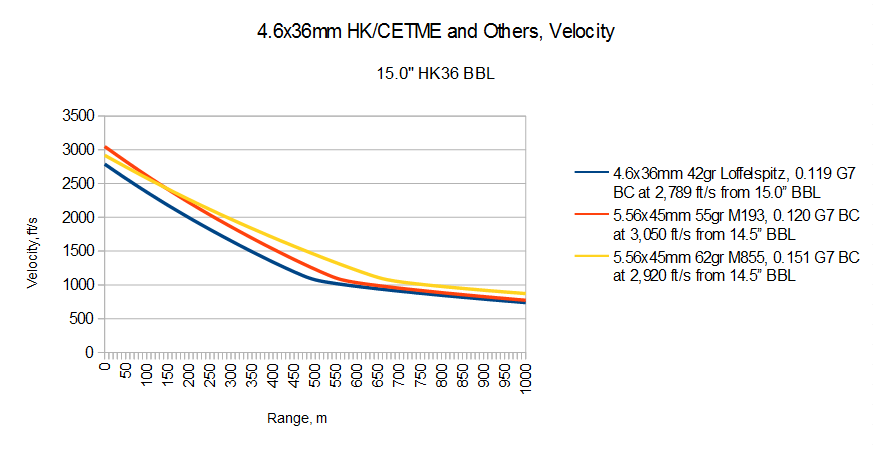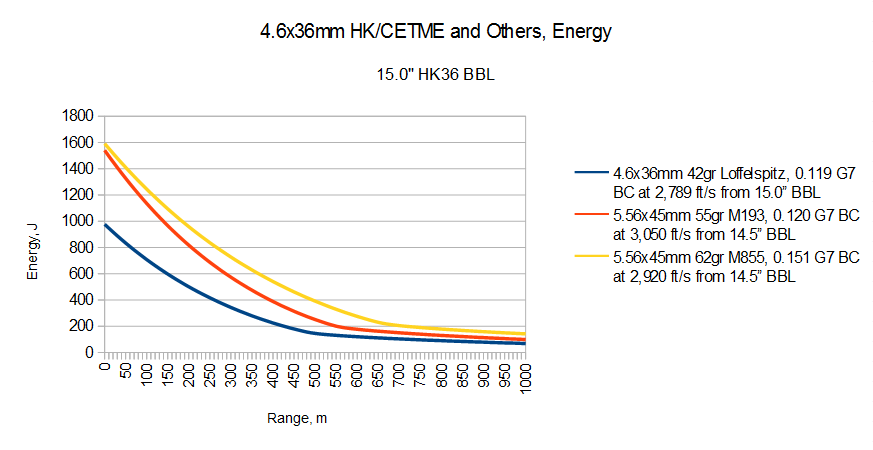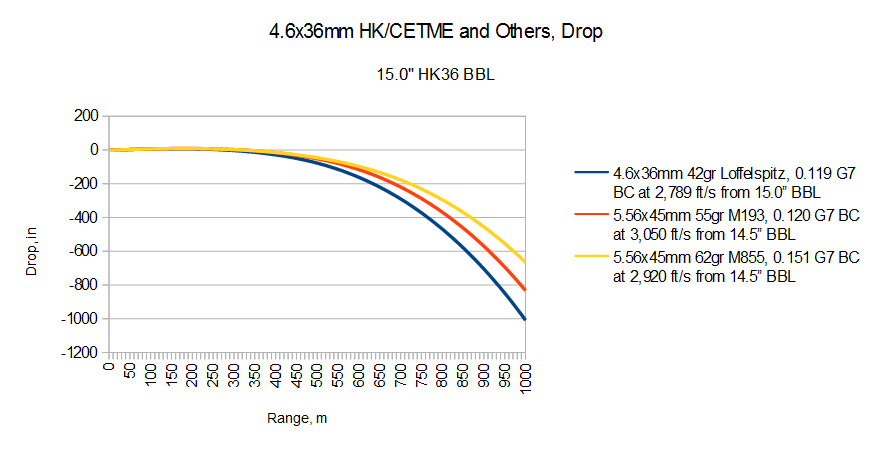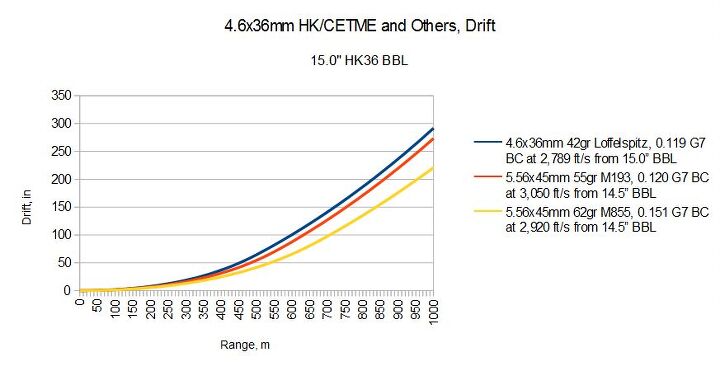Today we’ll be looking at a round with one of the strangest-looking projectiles ever designed for a military weapon: The joint Heckler & Koch-CETME 4.6x36mm round designed for the HK36 en-bloc clip fed assault rifle. The rifle was, as the name suggests, developed by HK, and based on their successful family of roller-retarded blowback rifles, including the G3, MP5, and HK33. It fed from an unusual fixed 30-round magazine, which was loaded from the side through a panel with a polymer 30 round en bloc clip. The projectile was developed by Gunther Voss, of CETME, the very same who invented the unique aluminum-cored projectiles for the 7.92×40 CETME a couple of decades earlier.
The 4.6x36mm represents a minimalist approach to assault rifle ammunition. Designed to reduce weight and recoil at virtually all cost, lethality was to be provided by the unique nose shaping, designed by Voss. The relatively blunt nose was cut at an angle by a concave depression, which ensured that even a straight-on low-angle-of-attack hit on the target would cause the bullet to rapidly upset and yaw, dumping its energy into the target and (hopefully) affecting a stop. This was an innovative solution to a problem that hadn’t yet been described: Fleet Yaw. However, as the concept has evidently not been recently evaluated, it is not known how good a solution it offers to that only recently-described problem.
One of the things that must be noted by my readers is that the graphs below are especially hypothetical for the 4.6x36mm HK/CETME. I have heard suggestion that the spoon tip design caused the rounds to spin down and lose stability quickly after 300m, so their performance beyond that distance may be even poorer than the graphs below indicate. On to the ballistics:
Despite the fairly lackluster ballistics of the 4.6mm thanks to the projectile’s poor i7 FF of 1.5 (bad even when compared to M193’s atrocious value of 1.3), the 4.6×36 does substantially reduce weight vs. 5.56mm, weighing between just 8.1 and 8.7 grams per shot, making it the lightest conventional brass cased round we’ve looked at so far. In the 30-round en-bloc packets designed for the HK36 rifle, this would have given soldiers so-equipped a substantial advantage in the number of rounds they could carry. Perhaps, with a better-shaped, more modern projectile, the 4.6x36mm round could even punch above its weight, too.
 Your Privacy Choices
Your Privacy Choices
